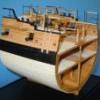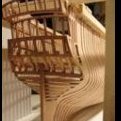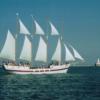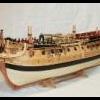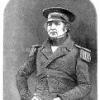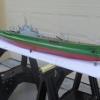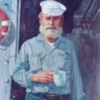Supplies of the Ship Modeler's Handbook are running out. Get your copy NOW before they are gone! Click on photo to order.
×
-
Posts
2,420 -
Joined
-
Last visited
Reputation Activity
-
 dvm27 reacted to michel saunier in SOLEIL ROYAL 1669 by michel saunier
dvm27 reacted to michel saunier in SOLEIL ROYAL 1669 by michel saunier
Hello everyone
Progression on the bow. Realization of different sculptures, horse's head on the crown of the herpes, rider leaning against the sea horse of the figurehead, Naiade behind the herpe.Figures and overview
Friendships Miche
-
 dvm27 reacted to shipmodel in SS Michelangelo 1962 by shipmodel - FINISHED - 1/350 scale
dvm27 reacted to shipmodel in SS Michelangelo 1962 by shipmodel - FINISHED - 1/350 scale
Hi again to all. Many thanks for the likes and compliments, as always.
It has been a while since my last post on this build log. Summer means more outdoor activities with family and many more outdoor chores, so less modeling. Someone should do something about that. 😋 This build has also been hijacked by another project. I have been hired by the US Merchant Marine Academy museum to build 7 models in the next 4 years, and I have been doing the research and laying the groundwork for them. I will, of course, be writing and posting build logs as I go along.
The first of these will be quite an unusual model. It will be of the USS/SS Leviathan (1914), which in her day was the largest ship in the world. She was a troop ship during WW I and an ocean liner afterwards. The troop ship was painted in a wild ‘dazzle’ camouflage, while the liner was dressed in the red-white-and blue livery of the US Lines.
The unique thing about the model is that I am directed to build the port side as the troop ship, with its guns, military style boats and dozens of life rafts, etc. The starboard side will be done as the ocean liner with the guns removed and civilian style boats. Down the centerline, where there were added lookout posts, rangefinder platforms and other structures, I am to cut them in half, make them hollow and paint the edges red to show the differences. The scale is 1/16”=1’, so the model of this 950 foot ship will be just under 5 feet long. Oh, and I only have 9 months to complete it. Wish me luck.
I did get some work done though. I ended the last installment of the log with the construction of the bow cargo cranes. Next I turned to the lifeboats. With the Michelangelo, as with all ocean liners, the boats are an important visual element. In this illustration you can see how their bright orange interiors contrast with the general white colors of the ship. There are several types of boats shown, including a motor launch, although I cannot decide if this is a grainy photograph or a painting that may differ somewhat from the actual ship.
In this next photo there is no launch, although the first boat is smaller and the second has an enclosed cabin at the bow. The boats hang from fairly simple one arm davits of a design that I have not seen before.
From overhead I can see that the davits are joined to each other with a shaft that ends in large fittings which are probably the winches for the boat falls. Toward the aft end of the boats there is a white blocky element which must be either the engine or the control station for the boat.
The boats started life as appropriately sized pewter castings from Bluejacket. With some refining they made excellent fittings. First the sides were smoothed to remove the bumps which are meant to be safety lines, I guess. The sternpost was straightened and concave hollows ground to let the water reach the propeller cavity. A plastic rudder was roughly cut and secured with CA, then refined in place.
The insides of each boat was ground thinner, as was the cast thwart insert. After gluing it in, the whole boat was primed and painted white. Then the thwart piece was painted a bright safety orange. A short piece of plastic rectangular rod was set in for the engine. Lift blocks were made from Bluejacket 2mm castings. Their becket ends were cut off and their eyes were drilled out at the other end. A wire was looped through the eye and secured in each hole at the ends of the boat.
This photo shows the danger of macro lenses. I had to go back to straighten the engine block and touch up the paint. The speckled look is not a mistake, though. Well, not much of a mistake. The original orange was much too bright, even though it was the correct color. For model purposes the intensity had to be tamed. I opted for a light mist of spray paint from a distance. The speckles are not individually visible without magnification unless your nose is an inch or two from the model, so the result is acceptable. Nonetheless, the next time I would probably choose a thin wash of translucent white or grey.
The davits turned into a problem. Here is my best photo of their shape. They have a curved vertical arm with two flat pulley at the top. About halfway down there is a support arm that holds the keel and has a padded block for the boat to rest against. None of the commercial houses had anything close, and I needed 40 of them, all identical.
Making so many identical fittings proved to be beyond my skills, so once again I turned for help to my friends who do laser cutting. Charlie Zardoz and Chuck Passaro are two of the most generous members of our community and they have my sincere thanks. I first marked out and cut a master davit from plastic. It turned out to be 22mm tall, about 7/8".
I took that photo with a macro lens and exported it into CorelDraw, where I drew the outline of the shape. I sent this out and had laser cut copies created in both wood and plastic. The wooden ones were just the right thickness, but unfortunately there was a weak point at the base of the support arm where the grain runs vertically. Even strengthening the wood with hardener only helped a bit. The plastic ones were strong enough, but were too thin.
In the end two of the plastic davits were glued together, with two punched discs to represent the pulleys.
The davits were secured against the deck house on the Boat deck 25mm from their partner. They were joined by a .020” brass bar seated in two small blocks mounted to the inner faces of the davits. Each boat was hung with .003" fly tying line that began in each block, ran up and over the inner pulley, through the lift block on the boat, up and over the outer pulley, and then through a hole in the bulwark that led behind the rail. Small clips held tension on the lines until the height was adjusted, then everything was secured with CA and the excess line cut off invisibly behind the railing.
Here are the forward three boats on the port side. The forward boat is slightly smaller and hangs just a bit lower than the rest. PVA glue holds the boats to their support arms and everything is really quite secure.
And for scale, here is FDR about to board the middle boat.
Here is the entire port side run of boats. I wish I had more depth of field for a better photo, but you get the idea.
And here is the starboard side. I think it matches up pretty well to the illustration of the ship at the beginning of this post.
Only a few final details and it will be ready for launching. I will report in again soon. Till then,
Be well
Dan
-
 dvm27 got a reaction from Jeronimo in HMS Kingfisher 1770 by Remcohe - 1/48 - English 14-Gun Sloop - POF
dvm27 got a reaction from Jeronimo in HMS Kingfisher 1770 by Remcohe - 1/48 - English 14-Gun Sloop - POF
Hey, does that mean we can all visit your workshop, Remco? I'm less than 8 hours away (by jet).
-
 dvm27 reacted to EdT in Young America 1853 by EdT - FINISHED - extreme clipper
dvm27 reacted to EdT in Young America 1853 by EdT - FINISHED - extreme clipper
Young America - extreme clipper 1853
Part 293 – Fore Topgallant Mast
Work continues to go slowly this summer. Much of it is repetitive, so there is not always something new to report. After the last post there were some interesting comments on rope sizing, so I included a couple pictures of things I use to simplify the selection and sizing process. The fist photo shows a table – an Excel spreadsheet actually – that tabulates 1:72 scale rope sizes and makeup.
I generally use linen for standing rigging because it stretches less and is stronger than the cotton I use for most of the running rigging - and occasionally for some standing lines. The left table is for standing and the right for running. Green indicates linen and yellow for cotton. The left column on each table is rope size
(actual circumference in inches). Next to the right is its 1:72 diameter, then the thread makeup for each size showing number of threads and thread designation, then the diameter of the model rope. The last column is a rough count of lines for each size, but this is not used much. Line is made on an as-needed basis. Creating this table involved making rope from different thread combinations, measuring the rope and then assigning sizes and creating the tables.
The next picture shows line on spools marked with rope size and makeup. Rope is put on these spools after dyeing and de-fuzzing.
There are two sets of spools, - one for standing and one for running. Sizing is not always precise, so some judgement is applied when selecting rope. This all involved a lot of work up front, but once done selection is quick and easy.
So, back to the work. The first picture shows the overall state of the model at the time of this post.
In the picture the three lowest yards have been installed and mostly rigged on the main and fore masts. The fore topgallant mast has been permanently set and the upper main and mizzen masts are temporarily placed.
The next picture shows the fore topgallant mast just before lowering to its final position.
Iron plates under the fid were slipped in and glued with some CA just before lowering the mast on to the trestletrees. In the next picture the mast is set and the starboard shrouds have been fitted.
The lanyards are left loose for final tensioning. At this stage, with the fid installed, the standing lifts for the upper topsail yard could be rigged. The picture shows eye splices on these shackled to the fid eyes on either side. Fid shackles were discussed in an earlier post. The next picture shows the fastening of the lift at the starboard yardarm.
I am securing these to the upper eyes on the yardarm band with hooks on eye splices – a common method that probably preceded shackles. I am using both methods, reflecting a likely evolution in practice at the time. These could also be shackled.
Standing lifts were used on all yards above the lower topsails. Lower yards had topping lifts and the lower topsail yards had no lifts. When under sail, with the yards raised, the standing lifts draped loosely behind the yard. On the model, all yards will be lowered with the lifts taut, as would be normal in port, with no sails set.
The last picture shows some corrective work involving threading the topgallant stay under the already installed shrouds – the result of a small oversight in fitting the shrouds first.
For some reason, the forward stays on the topgallant masts were the first lines to go over the masthead, unlike on the masts below, where they go over last. I had the correct order in my rigging list, but overlooked it. So, in the above picture, the stay was threaded under the already installed shrouds. I will cover the installation of this line and the topgallant backstays in the next part.
Ed
-
 dvm27 reacted to archjofo in La Créole 1827 by archjofo - Scale 1/48 - French corvette
dvm27 reacted to archjofo in La Créole 1827 by archjofo - Scale 1/48 - French corvette
Hello,
thanks for your feedback and "Likes", I appreciate your support a lot.
Currently I am producing the Gaff and the Boom for the Corvette.
There were many interesting details to clarify. So z. B. is located on the Gaff peak a small metal block for the national flag.
What is still to be clarified is the design of the Gaff goosenecks the boom.
Source: Auszug aus der Monographie zur La Creole von J. Boudriot
Source: William Dwight Whitney The Century Dictionary: An Encyclopedic Lexicon of the English Language (New York, NY: The Century Co., 1911)
Source: Text-Book of Seamanship, Commodore S. B. Luce, 1891
Source: Musée de la Marine (Bildausschnitt)
For the current building conditions of these components here a series of pictures:
Quelle: Musée de la Marine (Bildausschnitt)
&page=42#.url
&page=42#.url
-
 dvm27 got a reaction from Elijah in Medway Longboat 1742 by Chuck - FINISHED - 1/2" scale
dvm27 got a reaction from Elijah in Medway Longboat 1742 by Chuck - FINISHED - 1/2" scale
That is a very lovely model Chuck. Tell me your not tempted to float it in the sink!
-
 dvm27 got a reaction from Rustyj in Medway Longboat 1742 by Chuck - FINISHED - 1/2" scale
dvm27 got a reaction from Rustyj in Medway Longboat 1742 by Chuck - FINISHED - 1/2" scale
That is a very lovely model Chuck. Tell me your not tempted to float it in the sink!
-
 dvm27 got a reaction from mtaylor in Medway Longboat 1742 by Chuck - FINISHED - 1/2" scale
dvm27 got a reaction from mtaylor in Medway Longboat 1742 by Chuck - FINISHED - 1/2" scale
That is a very lovely model Chuck. Tell me your not tempted to float it in the sink!
-
 dvm27 got a reaction from Erebus and Terror in Medway Longboat 1742 by Chuck - FINISHED - 1/2" scale
dvm27 got a reaction from Erebus and Terror in Medway Longboat 1742 by Chuck - FINISHED - 1/2" scale
That is a very lovely model Chuck. Tell me your not tempted to float it in the sink!
-
 dvm27 got a reaction from bhermann in Young America 1853 by EdT - FINISHED - extreme clipper
dvm27 got a reaction from bhermann in Young America 1853 by EdT - FINISHED - extreme clipper
You mean you guys don't have the famous Rig Wright? It converts circumference to diameter and scale diameter in four different scales by rotating the dial.
-
 dvm27 got a reaction from Piet in HMS Kingfisher 1770 by Remcohe - 1/48 - English 14-Gun Sloop - POF
dvm27 got a reaction from Piet in HMS Kingfisher 1770 by Remcohe - 1/48 - English 14-Gun Sloop - POF
Hey, does that mean we can all visit your workshop, Remco? I'm less than 8 hours away (by jet).
-

-
 dvm27 reacted to Siggi52 in HMS Tiger 1747 by Siggi52 - 1:48 - 60 gun ship from NMM plans
dvm27 reacted to Siggi52 in HMS Tiger 1747 by Siggi52 - 1:48 - 60 gun ship from NMM plans
Hello,
just that you see that I'm still working, now and then 😉
I finished the inner planking of the gun deck with deck clamps for the upper gun deck and started to build the gun port lids.
-
 dvm27 reacted to CharlieZardoz in 19th Century 31-ton Revenue Cutter by CharlieZardoz - Scale 1/64 - building as USRC Active based off Doughty plans and BlueJacket Shipcrafters kit
dvm27 reacted to CharlieZardoz in 19th Century 31-ton Revenue Cutter by CharlieZardoz - Scale 1/64 - building as USRC Active based off Doughty plans and BlueJacket Shipcrafters kit
Hi all! Sorry its been so long been toiling away on planking and just finished the left side. Since the shape is so wedge shaped on this boat alot of planks needed to be spiled. That said it taught me alot and I think I did a reasonably good job for a first timer. Now starting the treenails using an awl, colored putty to fill the holes then a color pencil to add some detailing. Got more to go but thought I'd share
-
 dvm27 reacted to vaddoc in Deben 5-tonner by vaddoc - FINISHED - Scale 1:10 - a Whisstock yard design
dvm27 reacted to vaddoc in Deben 5-tonner by vaddoc - FINISHED - Scale 1:10 - a Whisstock yard design
Thanks John!
I did a bit more work, the cockpit is coming along fine but its structure is becoming really complex. The sides are not straight but slightly curved so every bench back/coaming will be laminated from 2 plywood sheets and a cherry sheet on each side. There will be other pieces covering the top and some more at the ends towards the cabin, then strips where the coammings meet the deck. More L shaped supports must be glued, the surfaces to be sanded, tung oil applied, glued in place...days and weeks but in the meantime, some more photos.
-
 dvm27 reacted to Mark Pearse in 28' Ranger-type Yacht by Mark Pearse - FINISHED - 1:12
dvm27 reacted to Mark Pearse in 28' Ranger-type Yacht by Mark Pearse - FINISHED - 1:12
I made the traveller rail, starting with the small parts because they needed to be on the bar when it was fabricated due to the bends.
Below is the sliding piece that the main sheet connects to - tube with wire bent & soldered. As a form for bending I held a thinner piece of wire next to the tube to wrap the wire around both to get the shape.
Below are the flanges that sit on the deck - 1/4" rod drilled down the centre & cut off. The thin rod was made to fit the hole tightly by some end tapping, to help in cleaning them up.
All the small pieces plus a sketch:
The bending jig for the bar:
The small pieces were soldered on, & then the rod bent:
Then feet soldered on & the piece has been dry fitted. Not glued until I'm sure the deck doesn't need painting again. I put a gentle curve into the top bar, it looks nice & it seems that I didn't quite get enough clearance to the tiller - a bit of tiller reshaping helped also. I find that things tend to look better on boats if there are gently curves & slight angles, even if you think it should be square.
-
 dvm27 got a reaction from thibaultron in Medway Longboat 1742 by Chuck - FINISHED - 1/2" scale
dvm27 got a reaction from thibaultron in Medway Longboat 1742 by Chuck - FINISHED - 1/2" scale
That is a very lovely model Chuck. Tell me your not tempted to float it in the sink!
-
 dvm27 reacted to BANYAN in HMCSS Victoria 1855 by BANYAN - 1:72
dvm27 reacted to BANYAN in HMCSS Victoria 1855 by BANYAN - 1:72
Hi folks, another update; not much but some progress. I am being slowed b research at the moment.
The steering platform is now complete and fitted over an inverted 'A' Frame - the rapson slide (not shown) slides across under the platform between the legs of the frame at the position of the cable drum.
The steering compass cabinet is complete but just dry fitted. The compass cover (pewter aftermarket part cut from its pedestal) is also only dry fitted. If we use this it will be painted brass. We are trying to make this by 'spinning' on a lathe to get the base form.
The hammock platform around the funnel has now been completed. This is only 11mm high to give some idea of size so this is a 'close-up' which shows all the 'detail' not visible to the naked eye As best as I can determine, there was only an outer rail. the hammocks are stacked vertically and I assumed some are lashed to the rails for stability? An inner ring would not work due to space and access issues. When the original photo is zoomed right in, the stanchions and 4 rails are very clear. I have used black cotton in-lieu of wire for the rails as, at this scale it was impossible to keep the shape of the 0.4mm wire without deformation as I bent it around and through the stanchion holes. The stanchions are after-market.
The companion has also been fitted in place.
I have also made a steam whistle (a little early for a steam horn which did not appear for another decade or so (as best I can determine). This was made from a tube with a rounded solid upper plug, and a bit of rod rounded and shaped to accept the actuator handle at one end - this was drilled through to accept the whistle and is intended to represent the steam cock valve. The spigot at the base is a locating pin. The photo of the whistle itself shows the item before cleaning and some polishing - this will be left brass. The ruler in the photo is in mm.
cheers
Pat
-
 dvm27 reacted to Chuck in Medway Longboat 1742 by Chuck - FINISHED - 1/2" scale
dvm27 reacted to Chuck in Medway Longboat 1742 by Chuck - FINISHED - 1/2" scale
I added the inboard sheer strip which is also laser cut to shape. It is 1/8" wide and really finishes off the cap rail. Then rather than paint the top of the cap rail red which would have been smart, I decided to work more on the frieze. Once that was added I can use the bottom edge of the frieze to align the molding strip below it. The molding strip is 1/8" x 3/64" and it is scraped to a simple profile.
The interesting thing you might note is that the molding strip below the frieze is NOT yellow cedar. The molding is actually boxwood. I find it is the best material for scraping moldings. I will post an illustration of the profile I chose soon. But if you look closely you wont see any real difference in color or appearance in the boxwood strip in comparison with the yellow cedar planking. They work really well together.
The frieze itself is an exact copy of the one on the contemporary model. I took the image of the cont. model and cropped and sized the frieze strip from it. After printing it out I went back in and cleaned it up with some paint and color pencils and scanned it again. That was cut out and applied to the model.
I am still working on the frieze for the transom.
-
 dvm27 reacted to Forlani daniel in Chebece 1750 by Forlani daniel - FINISHED - 1:48
dvm27 reacted to Forlani daniel in Chebece 1750 by Forlani daniel - FINISHED - 1:48
Ciao e grazie a tutti, adesso arrivano le coste più difficili....
Hello and thanks to everyone, now the most difficult coasts arrive....
Un Saluto
-
 dvm27 reacted to michael mott in Bristol Pilot Cutter by michael mott - 1/8 scale - POF
dvm27 reacted to michael mott in Bristol Pilot Cutter by michael mott - 1/8 scale - POF
The thing that I do like about this scale is the many options for experimenting with processes. Today I made a small form for making the dorade vents and used some .003" brass shim stock to see how easy the shape would be to replicate. here are the results.
The first annealing
second annealing
After 4 more annealing s
it was looking promising
A bit more trimming with some small scissors and a dab of paints
So now I know that they are possible I think some heavier shim-stock say 006 or 008 might be better then some proper patina.
Michael
-
 dvm27 reacted to michael mott in Bristol Pilot Cutter by michael mott - 1/8 scale - POF
dvm27 reacted to michael mott in Bristol Pilot Cutter by michael mott - 1/8 scale - POF
Thanks Pat.
I needed some 1 1/2" mahogany so cut some a tad over thickness then thickness planed it down with a simple jig and a block plane.
by using some 3/16 x 1/8th evergreen strip and placing them in the corners of the jig i can plane either or thickness by flipping them up or flat.
I then cut the strips to width with the table saw.
Next was to lay out the wood over the template to mark the angles and decide on the joints, tenons seemed reasonable.
They were formed with the usual assortment of saws and chisels.
And a test to get a feel for what the new companionway will look like.
Michael
-
 dvm27 reacted to Chuck in Medway Longboat 1742 by Chuck - FINISHED - 1/2" scale
dvm27 reacted to Chuck in Medway Longboat 1742 by Chuck - FINISHED - 1/2" scale
The outboard edge of the caprail was thinned down...it was easier to do this while holding the hull upside down. You want to leave 1/32" overhang with the cap rail. But that is a bit excessive but for now it is good to leave it a bit more. The top of the cap rail will be painted red. I will inevitably get paint on the outside edge which should remain bright, so once the cap rail is painted I will sand it nice and clean and make it less of an overhang.
Then it was time to fair inboard which always makes a mess. The goal here is to careful fair the frames so they get gradually thinner as they work their way to the sheer. In our case, the goal is to reduce the cap rail to a minimum width of 5/32". Any wider would look way out of scale. If you can manage a bit narrower that is even better. You can see in the photos what mine looks like and its 5/32" wide. There will be one strake inboard that is 1/32" thick. So that would make the overall width 3/16". So after I install this I will sand it a bit thinner then paint. Then I will sand outboard edge again and the results should leave a cap rail that is just under 3/16" wide.
Then the interior was cleaned up a bit and I applied a coat of wipe on poly. You can see the difference in the before and after photo and see how the cap rail was shaped etc....especially at the bow. I used 220 grit sand paper to fair the inside because anything coarser would grab the frames and possibly break them if they werent glued to the planking securely. Slow and steady is the way!!! 😊
Note that the inside edge of the cap rail at the bow is flush with the aft edge of the stem. This is what you are shooting for.
The aft edge is sanded flush with the sides of the transom and then the shape of the transom on each side was tweaked to clean everything up. I still have some minor tweaking to do but its just about done and ready for the next step.
-
 dvm27 got a reaction from jml1083 in Medway Longboat 1742 by Chuck - FINISHED - 1/2" scale
dvm27 got a reaction from jml1083 in Medway Longboat 1742 by Chuck - FINISHED - 1/2" scale
Chuck's incredible modeling skills aside, his wood choice does have a very pleasing scale appearance when viewed close up. Looks a lot like full scale pine to me. Certainly more realistic than boxwood in my opinion. I've been working on a project using the yellow cedar for the first time and had trouble achieving a finish similar to Chucks. He recommended using much finer sandpaper 280 - 400 grit and the results are much better.
-
 dvm27 got a reaction from Stuntflyer in HMS Kingfisher 1770 by Remcohe - 1/48 - English 14-Gun Sloop - POF
dvm27 got a reaction from Stuntflyer in HMS Kingfisher 1770 by Remcohe - 1/48 - English 14-Gun Sloop - POF
Hey, does that mean we can all visit your workshop, Remco? I'm less than 8 hours away (by jet).


